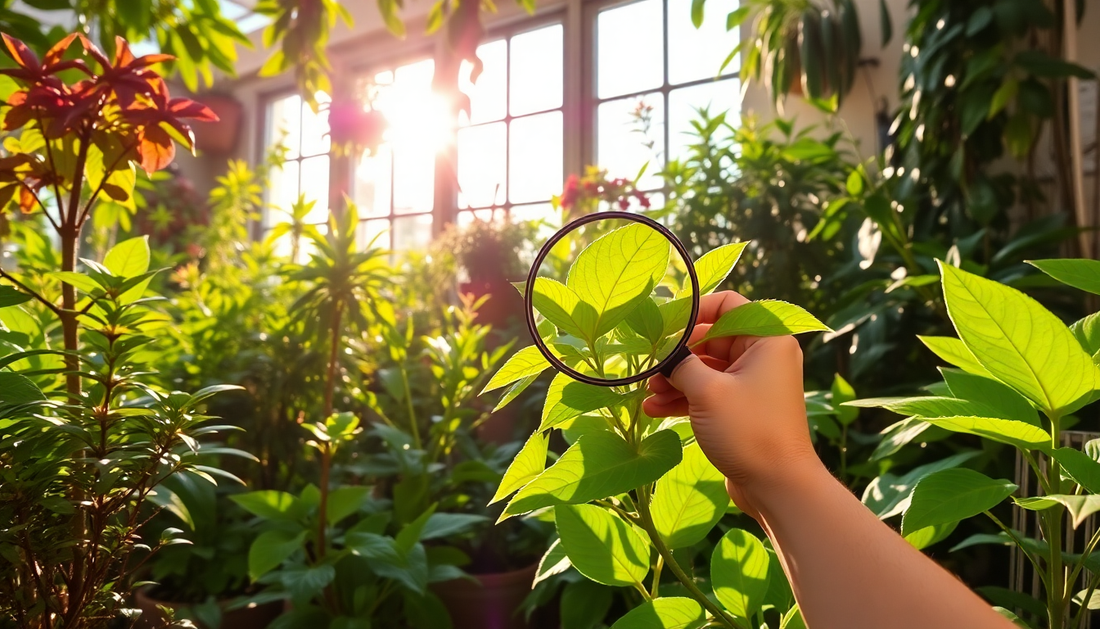
Keeping Your Plants Mold-Free: A Comprehensive Guide
As the owner of Idyl, an online shop specializing in plants and gardening supplies in Bangalore, I've seen my fair share of plant-related issues. One of the most common problems our customers face is dealing with mold on their beloved greenery. Mold can be a real nuisance, not only affecting the appearance of your plants but also their overall health and growth. That's why I've decided to share my expertise on how to prevent mold on plants, ensuring your indoor and outdoor gardens thrive.
Understanding Mold and Its Impact on Plants
Mold is a type of fungus that can grow on various surfaces, including plant leaves, stems, and soil. It thrives in damp, humid environments and can quickly spread if left unchecked. When it comes to plants, mold can cause a range of issues, from discoloration and stunted growth to root rot and even plant death.
The presence of mold on your plants can be a sign of several underlying problems, such as poor air circulation, overwatering, or inadequate drainage. It's important to address these root causes to effectively prevent and manage mold growth.
Maintaining Optimal Growing Conditions
One of the most effective ways to prevent mold on your plants is to ensure they are growing in the right conditions. Here are some tips to help you create an environment that is less conducive to mold:
Proper Watering Practices
Overwatering is a common culprit when it comes to mold growth. Make sure to water your plants only when the soil is partially dry, and avoid letting them sit in standing water. Use a well-draining potting mix and consider adding perlite or sand to improve drainage.
Adequate Air Circulation
Good air circulation is crucial for preventing mold. Ensure your plants have enough space between them and that there is a gentle airflow around the leaves and stems. Consider using a fan or opening windows to improve air circulation, especially in enclosed spaces.
Proper Humidity Levels
Mold thrives in high-humidity environments. Monitor the humidity levels in your growing area and use a dehumidifier or open windows to maintain a comfortable range, typically between 40-60% humidity.
Optimal Lighting Conditions
Adequate sunlight can also help prevent mold growth. Place your plants in a spot that receives the recommended amount of light for their specific needs. Avoid overcrowding, as this can reduce air circulation and light exposure.
Cleaning and Maintaining Plant Leaves
In addition to creating the right growing conditions, regular cleaning and maintenance of your plant's leaves can also help prevent mold. Here's what you can do:
Regularly Wipe Down Leaves
Use a soft, damp cloth to gently wipe down the leaves of your plants, removing any dust, debris, or moisture buildup. This helps prevent the accumulation of organic matter that can feed mold growth.
Use a Mild Fungicide
If you notice the early signs of mold, such as discoloration or fuzzy growth, consider using a mild, plant-safe fungicide to treat the affected areas. Follow the instructions on the product carefully and spot-test on a small section of the plant first.
Prune Affected Leaves
If mold has already taken hold, carefully prune away any affected leaves or stems to prevent the spread of the fungus. Discard the affected plant material properly and avoid composting it, as this can spread the mold spores.
Choosing the Right Soil and Fertilizers
The soil and fertilizers you use can also play a role in preventing mold on your plants. Look for potting mixes that are well-draining and formulated to discourage fungal growth. Avoid using heavy, dense soils that can retain too much moisture.
When it comes to fertilizers, opt for balanced, organic options that won't contribute to excessive nutrient buildup or imbalances in the soil. Overfertilizing can create an environment that is more favorable for mold.
Monitoring and Troubleshooting
Regularly inspecting your plants for signs of mold is crucial. Keep an eye out for discoloration, fuzzy growth, or any unusual changes in the appearance of your plants. If you do spot mold, act quickly to address the issue before it spreads.
Remember, prevention is key when it comes to mold on plants. By maintaining optimal growing conditions, practicing proper cleaning and maintenance, and using the right soil and fertilizers, you can keep your indoor and outdoor gardens thriving and mold-free.
At Idyl, we're committed to providing our customers with the knowledge and resources they need to care for their plants effectively. If you have any further questions or need assistance with your gardening needs, don't hesitate to reach out to our team. Happy gardening!







No comments